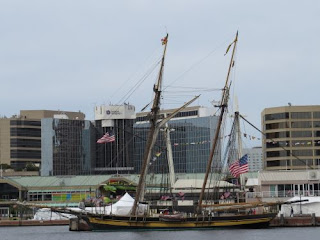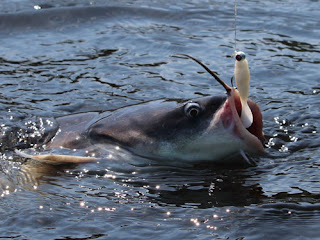 |
| Downtown Baltimore |
Baltimore, Maryland is a historic port city with a vibrant culture and lots of places to see. Attractions and experiences around Baltimore include museums, tall ships and other vessels, boat cruises, art exhibits, food and drink, festivals, and much more.
Educational and historical exhibits can be found at the Baltimore Aquarium, Maryland Science Center, World Trade Center of Baltimore, Fort McHenry, Maryland Science Center, National Great Blacks In Wax Museum, Reginald F. Lewis Museum of Maryland African American History, B&O Railroad Museum, tall ships, and others.
Named after Lord Baltimore in the Irish House of Lords, the city has a flourishing population of more than 650,000. Spanning over an area of 80.8 square miles, the city is a perfect mixture of the old with the new.
Many of the ethnic neighborhoods have been restored into modern shopping and dining locales but they still retain the old character.
Inner Harbor
 |
| Baltimore Inner Harbor |
Baltimore's world-renowned
Inner Harbor is surrounded by historic neighborhoods where you will find city living at its best with unique shops and restaurants for every style and taste.
Baltimore enjoys a vibrant arts scene and embraces its history and influence on American culture.
At the top of the list of places to visit is the Inner harbor. Views of the waterfront are informative and inspiring.
The docks and streets surrounding the inner harbor include a mix of homes, hotels, museums, restaurants, shops, promenade, public spaces, and entertainment venues.
The Inner harbor is home to the Harborplace, an entertainment center and the National Aquarium, one of the largest aquariums in the world. Port Discovery Children's Museum, and the World Trade Center of Baltimore are also located around the basin.
Baltimore Tall Ships
 |
| Pride of Baltimore II |
The Pride of Baltimore II is one of America's most famous tall ships. The ship was commissioned in 1988 as a sailing memorial to her immediate predecessor.
The original Pride of Baltimore sank during a violent storm off Puerto Rico in 1986, taking her captain and three crew members down with her.
Both ships were built as reproductions of 1812-era topsail schooners. The Pride of Baltimore II has sailed nearly 200,000 miles, making port in 40 countries around the world.
Lifestyle
 |
| Baltimore Harbor Connector |
Baltimore does not experience the extremes of weather change that occur in other parts of USA. The weather is relatively mild and the best time to be here is from April to November.
The city is well connected by road, air, and sea. Washington DC is located about one hour south on Route 95. Baltimore Washington International Airport (BWI) is only a half-hour drive south of downtown.
Moving inside the city is easy and loads of options like light rail system are available. The Harbor Connector water taxi boats are a unique and interesting option for exploring the harbor area. It is a nice way to get around during the warmer months, and offers unique views of the Baltimore skyline.
Baltimore is also known as "Charm City" and other nicknames.
Baltimore Seafood
Baltimore is famous for its outstanding seafood. From the nearby Chesapeake Bay come blue crabs, oysters, striped bass, and other delicacies.
Other Maryland seafood comes the Atlantic coast, including sea scallops, lobsters, sea bass, and other fish.
A few of the most popular dishes include steamed crabs, crabcakes, oysters on the half shell, single fried oysters, fish and chips, and others.
Landmarks
Baltimore Places to Visit - Attractions
Baltimore Inner Harbor (baltimore.org)
Orioles Baseball (baltimore.orioles.mlb.com)
Ravens Football (www.baltimoreravens.com)
Merriweather Post Pavilion (www.merriweathermusic.com)
National Aquarium (www.aqua.org)
Baltimore Zoo (www.marylandzoo.org)
B&O Railroad Museum (www.borail.org)
Maryland Science Center (www.mdsci.org)







